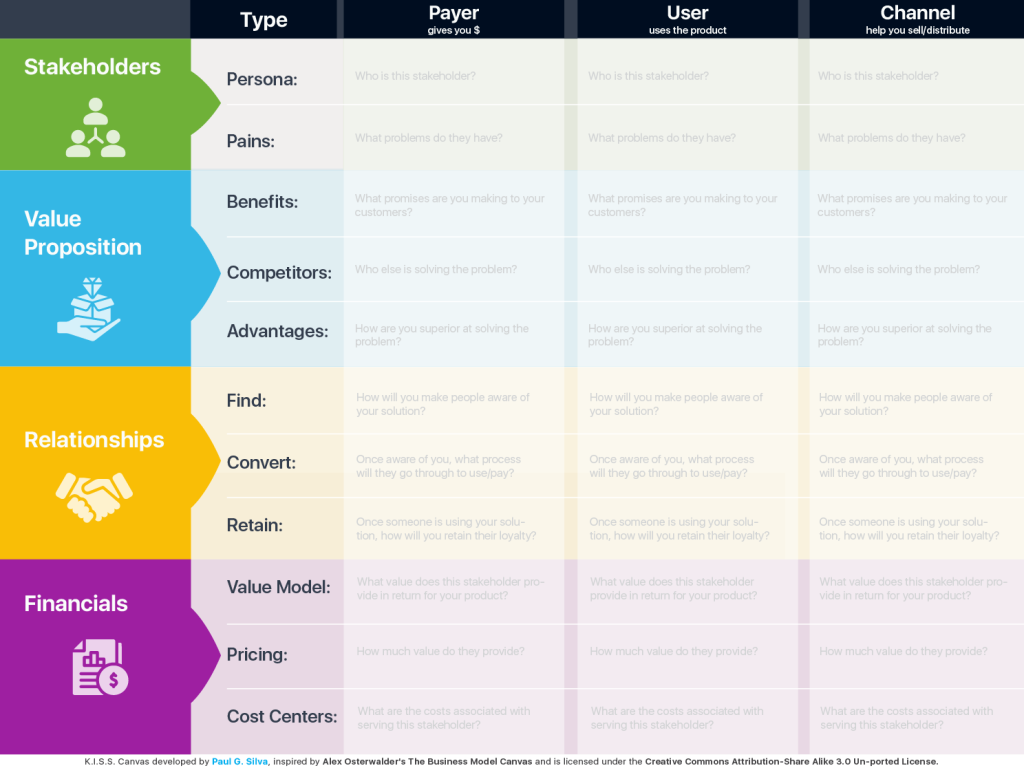
[This is part of a series on the KISS Canvas]
UPDATE: This blog post is about version 6 of the KISS Canvas. Version 7 was release in December of 2023 and incorporates critical improvements that facilitate product-market fit & adoption.
Struggling to map your business model because you have lots of stakeholders / customer segments?
The Keep It Super Simple (KISS) Canvas takes your complex, multi-sided business model and turns it into an easy-to-understand story. Each row answers a key question about a stakeholder. Each column represents a stakeholder: payers, users, channel partners, employees, etc. One can easily turn a KISS Canvas into a pitch deck for investors by simply creating slides that mirror the content in each row.
Let’s look at an example for for for-profit manufacturing startup: Magic Mops
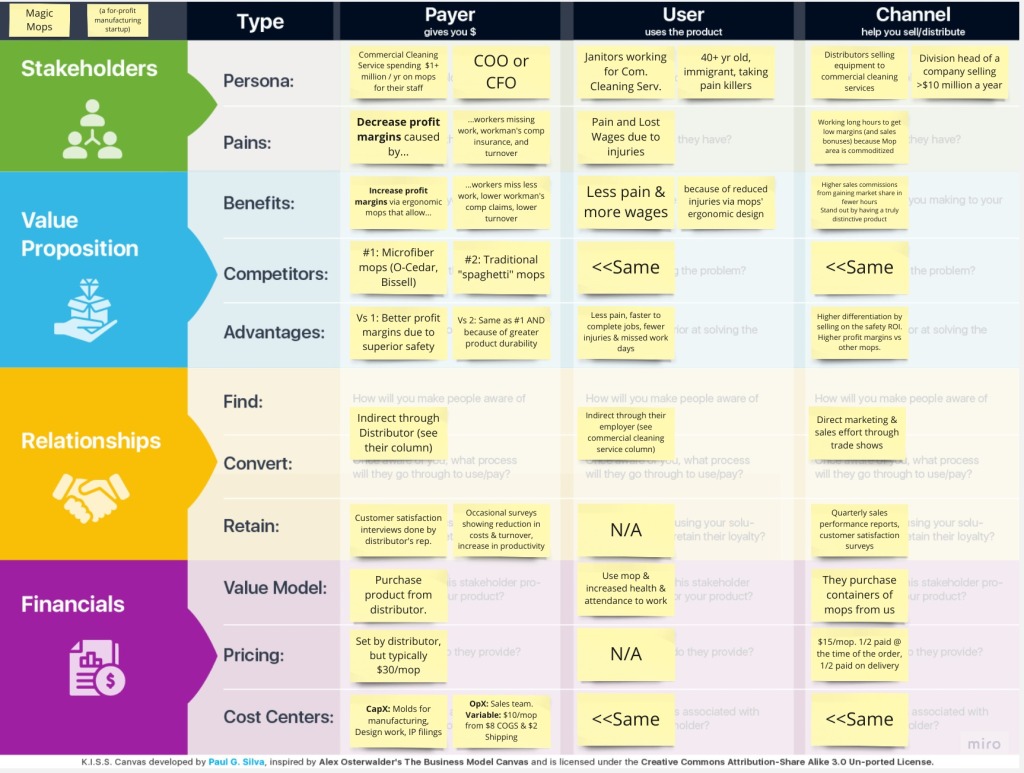
Here we have a company that makes ergonomic mops used by janitors who work for commercial cleaning companies who purchased the mops through a distributor. These stakeholders have very different pains and incentives. Magic Mops must have a viable business model for all three stakeholders or their company will fail.
Now lets look at the model for a nonprofit entrepreneurship support organization: Valley Venture Mentors
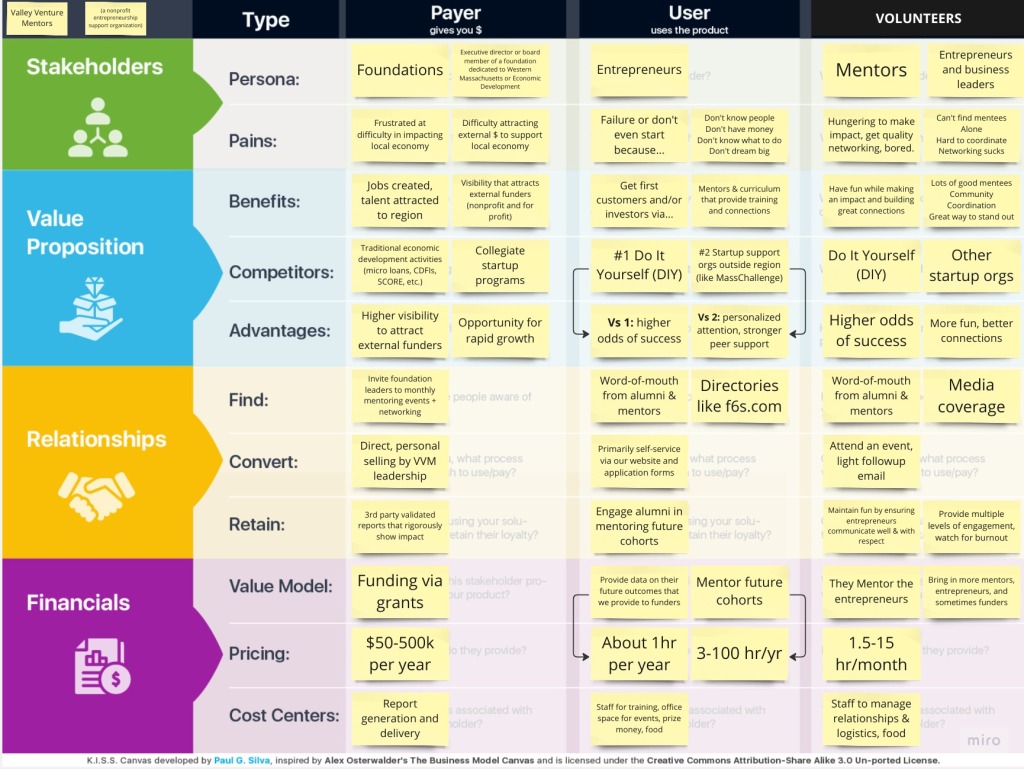
Like many nonprofits, Valley Venture Mentors had 3 key stakeholder groups: funders, benefactors (in this case entrepreneurs), and volunteers (mentors). To thrive it had to make sure that all three were being served.
The KISS Canvas, in one page, highlights:
- Who each stake holder is and what motivates them
- The value that must be delivered
- The relationships needed to find, convert, & retain them
- The value each provides Magic Mops
Get Your Own KISS Canvas Template For Free
If you would like to use the KISS Canvas, you may do so completely for free as it are licensed under creative commons :).
KISS’s Questions
- Key Stakeholders – Who do you serve? Each stakeholder gets their own column to keep their information clear.
- Type – Stakeholders tend to fall into predictable categories: the one who pays you, the one who uses the product, the one who connects you to the customer, etc. It is important to know each type’s needs.
- Persona – Describe the archetype that represents the key traits of this the stakeholder.
- Pains – What problems do they have?
- Value Proposition – What do you offer?
- Benefits – What promises are you making to your customers?
- Competitors – Who else is solving the problem?
- Advantages – How are you superior at solving the problem?
- Relationships – What kind of relationships will you have with each segment?
- Find – How will you make people aware of your solution? This is often called marketing or promotion.
- Convert – Once aware of you, what process will they go through to use/pay for your solution? This is often called sales.
- Retain – Once someone is using your solution, how will you retain their loyalty?
- Financials – How does the money (and value) flow?
- Value Model – What value does each segment provide you in return for your product (money, attention, referrals, etc.)?
- Pricing – How much do you charge?
- Cost Structure – What are the costs associated with serving this stakeholder?
Best Practices
- The column headers are just suggestions. You don’t have to describe a payer, user, and channel partner. You could instead ID different stakeholders like funders, volunteers, & beneficiaries. You can add additional columns (although I recommend no more than 5 total columns).
- At the start erase every assumption about a solution from your thinking so that you can (1st) expand the universe of the potential stakeholders, then (2nd) discover all the different stakeholders’ personas, in order to determine (3rd) their primary migraine-sized pains, and then (4th) bring to bear the benefits that your solution might/must provide.
- Be clear & concise by staying within the size limit to the boxes.
- Consider everything in a box as a hypothesis waiting to be validated by actual interactions with customers.
- Don’t agonize. Filling in the canvas should take 30-90 minutes. Then go test the hypotheses with customers, update the canvas, and repeat as needed.
- Indicate validated hypotheses by changing their background color to be a darker shade of its original color.
Why KISS instead of the BMC?
30-page business plans are great for established businesses and terrible for startups that need to iterate quickly. 15+ years ago the Business Model Canvas (BMC) changed everything by giving us a 1-pager to help quickly document and test the key hypothesis behind our business models. The BMC was a quantum leap forward.
However, my students and I often struggled with the structure of the canvas. While it was superior to a business plan it was relatively hard to read & use. You literally needed a map to show you how to read it – start here, jump to there, then jump down to here…
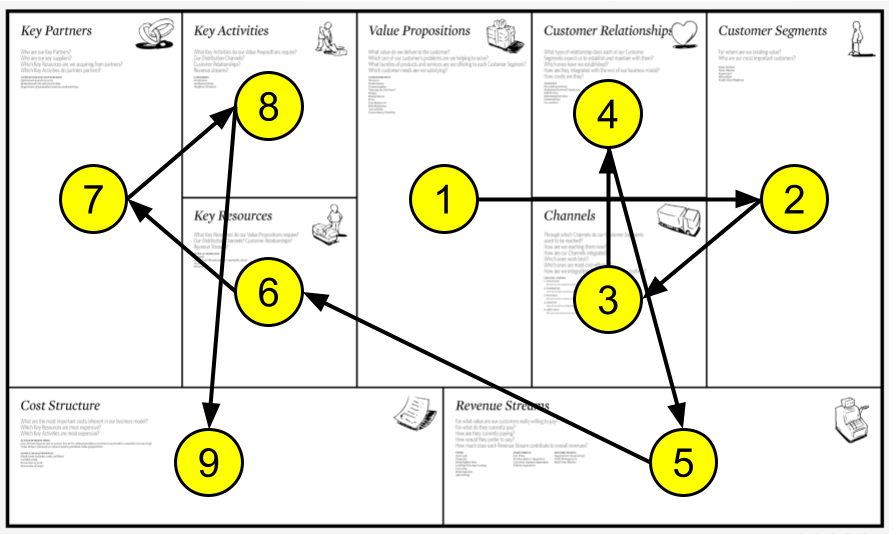
A second major pain point is that if you have multiple customer segments or stakeholders, you need to use different colored sticky notes. I found that trying to filter out the information visually was very difficult, as you can see from this actual canvas I developed for a startup accelerator I was running in 2015…
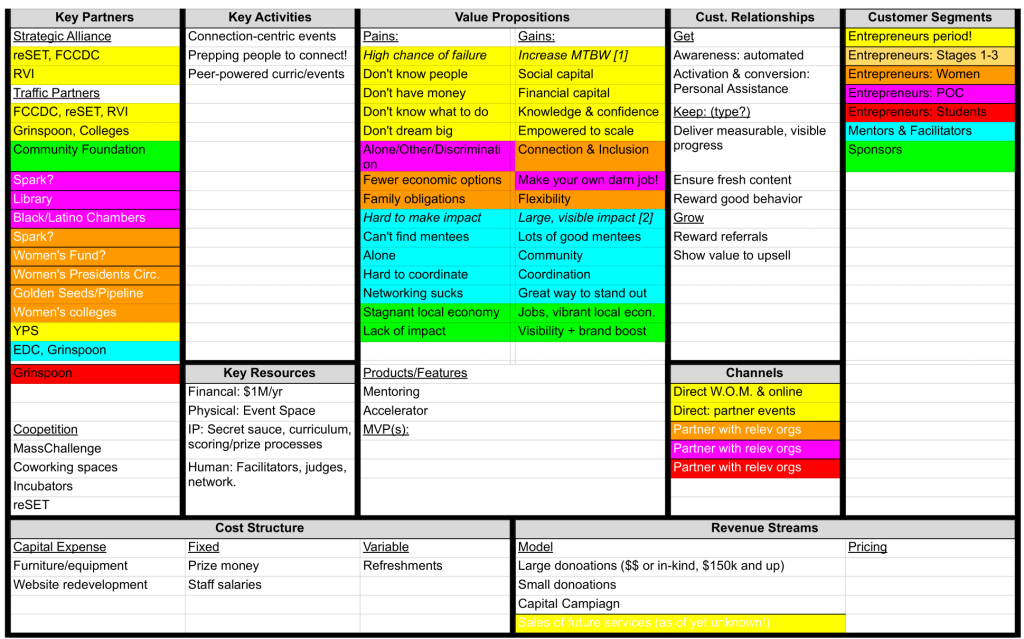
Get Your Own KISS Canvas Template For Free
If you would like to use the KISS Canvas, you may do so completely for free as it are licensed under creative commons :).
Check out more KISS Canvas Content.
Gratitude
The KISS canvas was inspired by Alex Osterwalder’s The Business Model Canvas. My great thanks to the many people who have contributed to the KISS Canvas design over the years. Two who I need to particularly call out for their awesomeness are Rick Plaut and Kelly Minton.
Thank you also to PixelEdge‘s Muhammad Awais Amjad for applying his design skills to make the newest version of the canvas attractive to look at and functional at the same time!
Pingback: A Canvas That Tells a Story: KISS Canvas (v3.1) – Paul G. Silva
Pingback: Pleasing the CEO is not enough – b2b applications that only serve senior leadership fail – Paul G. Silva